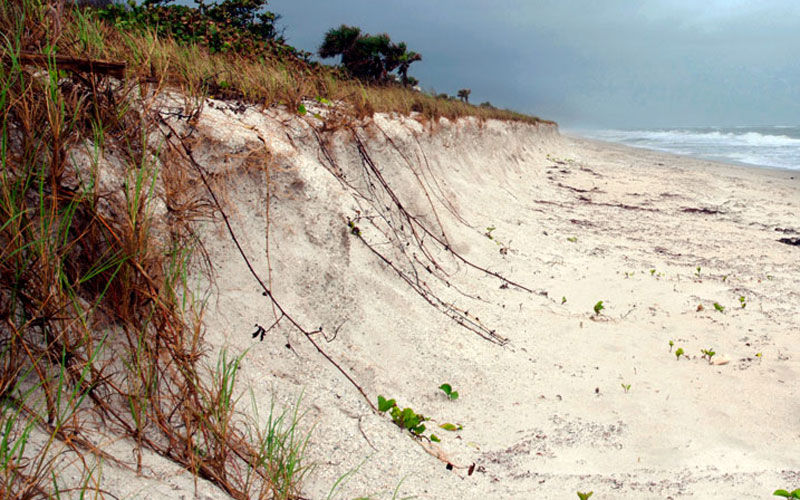INDIAN RIVER COUNTY — The dunes along northern stretches of the barrier island’s beaches have seen better days.
The high winds and heavy surf of recent weeks have added to the woes caused by Hurricane Sandy, which raked more than a half-million cubic yards of sand off the island’s beaches as it rolled up the eastern seaboard a year ago.
In the 13 months since, Indian River County Coastal Engineer James Gray has been working to get the money and permits needed to replace the sand that had been placed on beaches from John’s Island to Treasure Shores Park during the last ill-fated replenishment project.
As early as January, the county hopes to once again rebuild some of these beaches, but the scope will be much smaller this time as money for only about 155,000 cubic yards of sand is budgeted.
Also in January, the Sebastian Inlet District will begin rebuilding a three-mile stretch of beach starting about a half a mile south of the inlet to about a half a mile south of Ambersand Beach.
For the county’s project, finding enough sand before spring turtle nesting season could be a problem and perhaps even delay the project for another year.
According to county documents, at this time there is no sand readily available at the Ranch Road Lake Mine, the mine the county utilized for its $15 million John’s Island to Treasure Shores project.
Between the David Mine and Henry Fischer’s 86th and 17th Street Mines, less than 5,000 cubic yards of sand is readily available.
The Hammond Mine has 150,000 cubic yards stockpiled, but that sand has not yet been approved by regulatory agents.
The Sebastian Inlet project doesn’t have such stumbling blocks thanks to a sand trap deep in the belly of inlet, about 2,000 feet from the A1A bridge.
On any given year, between 20,000 to 30,000 cubic yards of sand is collected in the trap.
Marty Smithson, the administrator of the Sebastian Inlet District, said about 170,000 cubic yards of sand will be dredged from the pit and placed on the beaches.
The project will effectively clean out the trap and allow the contractors to expand the size of the trap for future uses, said Smithson.
Both projects received the blessing of the state legislature when it approved $37.5 million earlier this year for Florida beaches eroded by Hurricane Sandy.
Of that pool of money, $4.8 million was earmarked for the county and inlet projects – about half the expected cost.
Gray predicted in May the county project would begin by fall. Now, considering November’s heavy winds and high surf, it may have been a blessing the project was stalled.
Smithson said the Sebastian project cannot come soon enough.
“There is a real need for it,” he said.
Gray is also optimistic the county project will not suffer further delays.
“We are hopeful for a January start date, but there is this thing called permitting,” he said.

